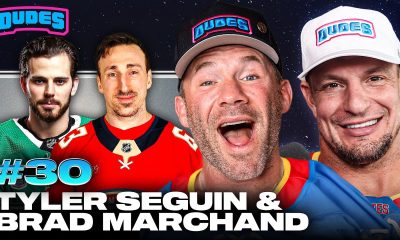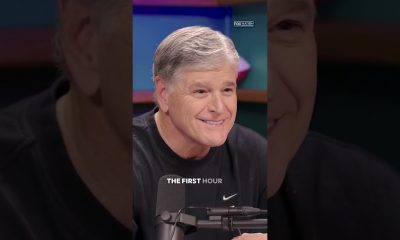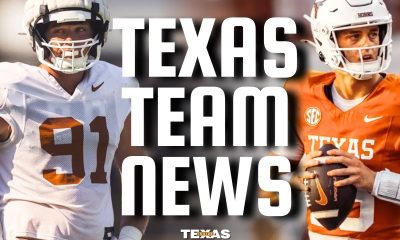NIL
Inside Carson Beck's move from Georgia to Miami
When Beck’s camp let Miami know he was planning on entering the portal, the Canes figured they had a good shot. It helped that they had a track record with Ward, who had gone from a fifth-round draft projection to a potential top-10 pick, and also that Beck’s girlfriend, Hanna Cavinder, plays on Miami’s basketball […]
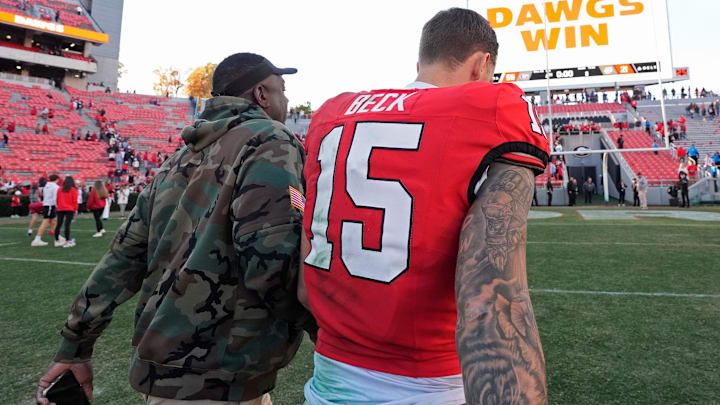
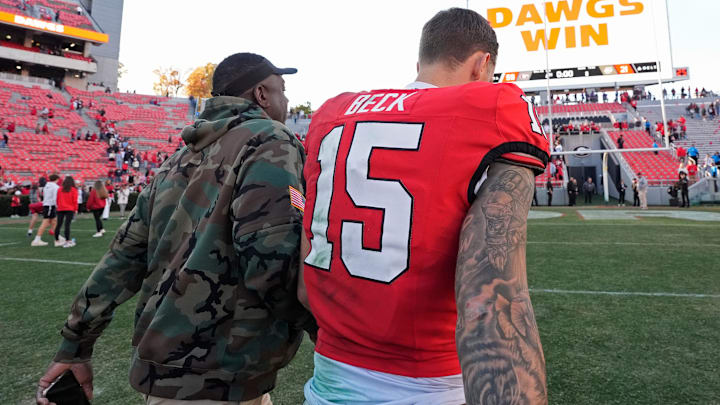
When Beck’s camp let Miami know he was planning on entering the portal, the Canes figured they had a good shot. It helped that they had a track record with Ward, who had gone from a fifth-round draft projection to a potential top-10 pick, and also that Beck’s girlfriend, Hanna Cavinder, plays on Miami’s basketball team.CORAL GABLES, Fla. — New Miami quarterback Carson Beck arrived on campus Saturday afternoon with a smile on his face, a brace on his surgically repaired right elbow and an eager offensive coordinator waiting to shake his hand.Saturday, Beck’s transfer journey from Athens to Miami reached its destination.
Miami, meanwhile, spent time trying to gather as much information as it could about Beck once he declared for the NFL Draft in late December, on the chance he ended up in the transfer portal instead. Studying the film, Dawson felt Beck’s 2023 season was elite. This year, Beck didn’t play as well, but the Bulldogs weren’t as good around him, especially without Brock Bowers or Ladd McConkey catching passes. While Bowers and McConkey starred as rookies in the NFL, Georgia’s receivers led all Power 4 programs with 31 drops. The Bulldogs also dealt with injuries on their offensive line, allowing 1.79 sacks per game (58th among FBS programs).
Adding another experienced receiver to the roster, though, is a priority. Miami has already picked up LSU transfer CJ Daniels, who has started 30 games in his career, and has blue-chip talents in Jojo Trader and Ny Carr entering their second seasons.
Landing Beck could help the Canes attract more talent. Miami coaches can’t count how many times receivers in the portal would ask them, Who’s gonna be your quarterback?
“So, when are you going to start throwing?”
“So, when are you going to start throwing?”
AdvertisementThe other compelling factor: Beck, like Ward, is highly motivated to prove himself to NFL teams in his final college season. Miami believes it is putting Beck in a similar situation to flourish as it did with Ward, who also declared for the draft before deciding to return for another season of college football and transfer.Dawson was not excited about any other quarterback who had entered the portal or was expected to enter the portal this offseason. The Hurricanes liked Texas’ Quinn Ewers, but no one really knew what he was going to do once the Longhorns were eliminated from the College Football Playoff. NFL evaluators have projected Ewers anywhere from the third round to the sixth round. (Ewers told ESPN before Friday’s Cotton Bowl semifinal that he expected to leave for the NFL. Texas lost to Ohio State 28-14.)After winning 10 games for only the second time since joining the ACC in 2004, Miami couldn’t go into Cristobal’s fourth season without a star at quarterback. But the Hurricanes didn’t want to take a guy just to take a guy.Beck, who walked onto campus flanked by a person affiliated with Miami’s name, image and likeness collective, is reportedly set to make million to start at quarterback for Miami this coming season. But The Athletic has heard through multiple sources briefed on his recruitment the number he’s set to receive from Miami channels is closer to a little over million, roughly double the .6 million Heisman Trophy finalist Cam Ward earned through Miami’s collective (not including additional deals with Adidas, Bose and others) when he led the No. 1 scoring offense in college football this past season.South Dakota State’s Mark Gronowski, who had led the Jackrabbits to two FCS national titles, spoke with Miami. Dawson liked him and was going to fly up to Sioux Falls to see him, but the trip was canceled after he heard Gronowski might need surgery. Gronowski ended up signing with Iowa, and the Hawkeyes confirmed he would have surgery in the coming weeks and would not begin on-field workouts until June.Miami thought the only negative with Beck was his injury, which will sideline him for spring practice. Dawson talked to a handful of people who have dealt with the injury, including 49ers quarterback Brock Purdy’s private quarterback coach Will Hewlett. Purdy came back from a torn UCL and started throwing again some eight to 10 weeks after his surgery. All of the feedback Miami got said the same thing: Beck’s injury wasn’t that bad, and his recovery outlook is pretty clean. Beck, a Jacksonville, Fla., native, is expected to be around for spring ball to acclimate with his teammates and learn the offensive system.AdvertisementMiami native Fernando Mendoza was another possibility for the Hurricanes. The former Cal starter had committed to Indiana right before Christmas. But even two weeks later, some Miami folks believed Mendoza would come home if the Hurricanes offered him. The Canes staff liked him, but in their eyes, he didn’t have Beck’s talent.
NIL
Texas Tech softball pushed NiJaree Canady to ‘limit’ in WCWS finals
Mere hours after reportedly agreeing to a new, historic seven-figure contract to stay at Texas Tech next season, the Red Raiders’ iron arm wore out. “Everybody has a limit,” Texas Tech coach Gerry Glasco told the ESPN broadcast shortly after pulling her during Friday’s Women’s College World Series championship series Game 3. Up until allowing […]

Mere hours after reportedly agreeing to a new, historic seven-figure contract to stay at Texas Tech next season, the Red Raiders’ iron arm wore out.
“Everybody has a limit,” Texas Tech coach Gerry Glasco told the ESPN broadcast shortly after pulling her during Friday’s Women’s College World Series championship series Game 3.
Up until allowing five Texas runs on five hits in the first inning of the Longhorns’ 10-4 trampling of the Red Raiders to claim their first national championship, NiJaree Canady didn’t know limits.
This is the same player who dominated with her riseball at Stanford, leading the Cardinal to two straight World Series appearances and winning the USA Softball Collegiate Player of the Year Award, who revolutionized the sport with her $1 million transfer to West Texas. Canady then used a 0.89 earned run average to lead Texas Tech to Oklahoma City for the first time in the program’s history.
If there was ever a player you’d want to pitch every inning of a three-game series it was Canady. And Red Raiders coach Gerry Glasco would pick Canady again every single time.
“On my left, NiJa Canady,” Glasco said motioning toward Canady postgame. “I’ve been around a lot of softball players, I’ve never been around a better teammate and a better person. Straight-A student all year. Goes to every practice. First one to work, last one to leave. Has played through injury. … Gives us everything she’s got.
“I can’t imagine anybody that I’d — if I had a game in two days, that’s who I want beside me to go to war with. She’s an unbelievable talent. I believe she’s the top player in college softball. She’s provided a great role model for any youth softball player in the country. When you know how good she is on the field and how good she is in the classroom and how good of a teammate she is, and her standards of everything is of excellence.”
After tossing 520 pitches in nine days during this WCWS, Canady ran out of steam against a talented Texas lineup that saw her three days in a row. As improbable as it has seemed at times throughout her collegiate career, the face of the sport finally hit a breaking point.
Canady uncharacteristically allowed four singles and a home run after throwing just 25 pitches in the first inning, giving the Longhorns a 5-0 lead, which they never squandered.
Canady isn’t one to make excuses, however. And there was no way she was going to go down without a fight.
“Every college softball player right now is tired,” Canady said. “There’s nothing else I’d rather be doing right now, playing softball and fighting for the three people to my right. We wanted a different result, but I wanted to leave it all out for my teammates and most importantly my seniors.”
Canady added after being asked if she was exhausted in the first inning: “No, I feel fine. Like I said before, I have all summer to rest.”
Watching the disastrous first inning, Glasco, however, knew then Canady had given all she had to offer.
“We pushed it to the very limit,” Glasco said. “The kid gave us everything that she had and the first inning was a result of a great hitting team, a well-coached team, a well-prepared team coming up against somebody they faced three days in a row. All you had to do was look at the velocity the first night compared to the second night and tonight and it was slowly edging away.
“At the same time, you’re dealing with a great competitor, and you can’t let her pitch all year and take the ball away from her. The game got us. The game teaches the game. The game got us right there. What an incredible performance when you look at what she did the whole season carrying our team, especially when you know the extent of the injuries that she fought through.”
Canady’s performance in Game 3 isn’t how she and the Red Raiders wanted this historic season to end. But Canady’s return to Lubbock next season could be even more exhilarating than Year 1.
Canady’s fame and softball’s rise to the national stage leaves unlimited potential for 2026. Games 1 and 2 of the WCWS final set viewership records. Three-time Super Bowl champion Patrick Mahomes flocked to OKC to watch Canady.
While Canady is one of the most dominant forces the sport has ever seen, Glasco knows he needs to acquire and develop more pitching depth behind her next season. He believes if Texas Tech does that, with Canady’s leadership and workhorse mentality, they’ll be back in OKC this time next season.
In fact, minutes after falling short, Glasco has made fleshing out a more complete pitching staff to keep Canady’s innings down for the WCWS his No. 1 goal for this offseason. He’d like to see Canady pitch nearly 100 innings less during the regular season.
Everyone has their limits. Even the sport’s greatest superstars.
“I hated it,” Glasco said of the first inning. “I hated to see her — I almost switched before, and I wish I would have, but it’s 2-0, and you are used to watching her get out of jam after jam after jam throughout the year and come out when somebody makes a threat, she just usually comes out clean. I was hoping that she would do that one more time.
“But, yeah, definitely the amount of innings got to her.”
NIL
NCAA athlete pay: Here’s what’s next
Dan MurphyJun 7, 2025, 09:15 AM ET Close Covers the Big Ten Joined ESPN.com in 2014 Graduate of the University of Notre Dame College sports changed radically Friday night. Schools will begin directly paying their athletes in less than a month, thanks to a legal settlement that was officially approved in federal court Friday. Judge […]
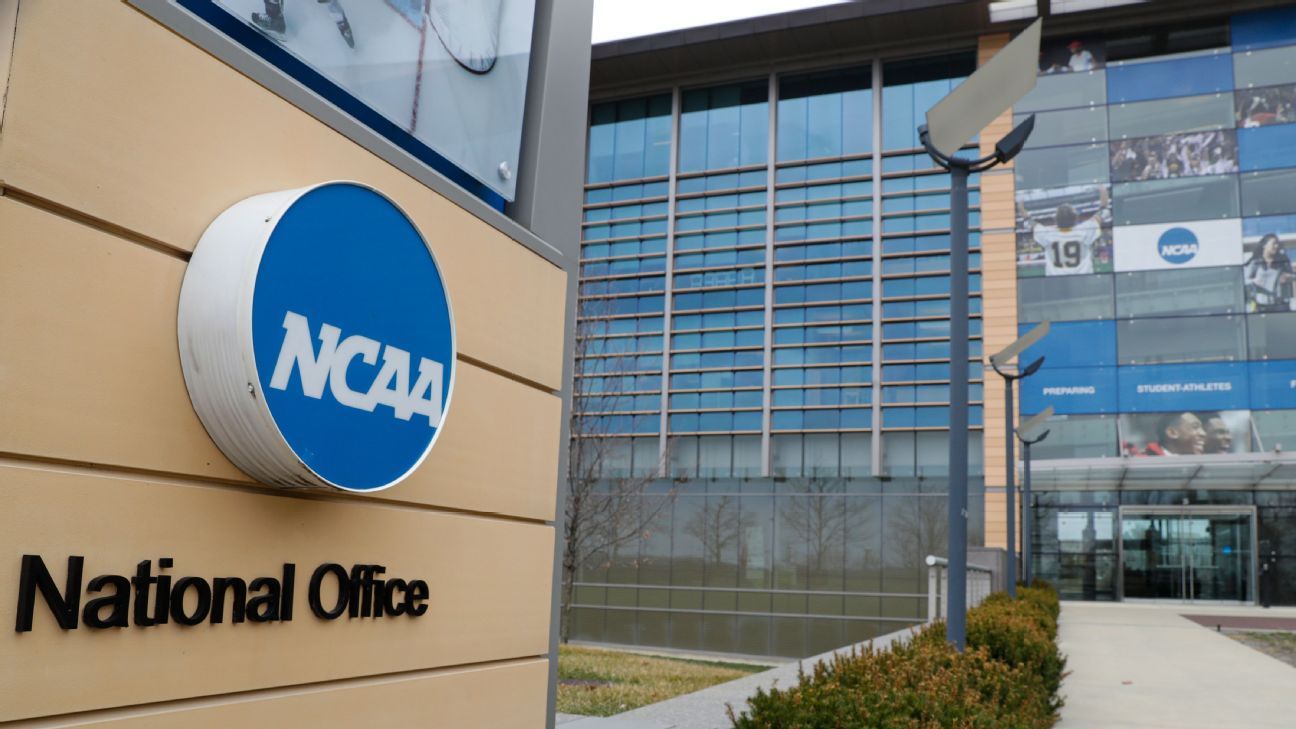
College sports changed radically Friday night.
Schools will begin directly paying their athletes in less than a month, thanks to a legal settlement that was officially approved in federal court Friday. Judge Claudia Wilken said the deal would create “ground-breaking changes in NCAA rules that govern student-athlete compensation.”
The battle to let players share in the spoils of an industry that has long outgrown any amateur roots it ever had started more than 20 years ago. While Friday’s decision was a long-awaited milestone, both players and administrators said they view it as a fresh starting point for the future of college sports, not a finish line.
Sports fans can be forgiven for tuning out of the tedious legal process that led up to this point. Let’s get up to speed on what this means for the immediate future in college sports and what major questions remain unanswered:
New limits
Starting July 1, each school will be allowed (but not required) to spend roughly $20.5 million in new payments to their athletes.
That figure comes from a negotiated formula that caps athlete payments at 22% of the average annual revenue that FBS-level schools get from ticket sales, broadcast rights and a few other items. The cap will grow on a regular basis during the 10-year lifespan of the settlement as the schools’ revenue expands and via scheduled incremental increases. Sports economist Daniel Rascher, a subject matter expert used in the settlement process, wrote that he expects it will grow to more than $30 million per year by the time the deal expires.
Each school’s athletic department can decide how it will divide that money among athletes. Not many major programs have shared their budget plans, but those that have say they will spend the overwhelming majority (up to 90%) of their money on football and men’s basketball players.
Athletes are also still allowed to make money from selling the rights to their name, image and likeness (NIL) to other parties. The settlement creates a new set of rules and a brand-new organization called the College Sports Commission that will try to stop boosters from using NIL deals as additional salary payments, a practice that became commonplace in the past several years.
However, many teams are already working in concert with booster collectives to find creative ways to pad their payrolls with third-party NIL deals that fit within the new rules. Industry experts say football and basketball teams will likely have to find ways to provide several million dollars beyond the salary cap limits if they want to field a team that can compete for championships.
New legal challenges
Friday’s settlement ends a trio of federal antitrust lawsuits that had the potential to financially weaken the NCAA. But the deal does not end the long list of legal problems for the college sport industry’s business model.
The contracts that athletes are now signing with their schools will likely bolster ongoing legal arguments that at least some college players should be considered employees of their schools. The NCAA is fighting more than a dozen lawsuits that challenge rules about how long athletes are allowed to remain in college sports.
Many sports lawyers expect that key parts of the settlement will spur a new barrage of lawsuits — both the negotiated salary cap and the College Sports Commission’s attempts to stifle deals between athletes and third parties could be the target of future antitrust challenges. Schools will also likely have to defend their decision to provide most of the new payments to men’s sports teams against claims that their budgets violate Title IX — a federal law that prohibits gender-based inequity.
The NCAA’s next steps
NCAA president Charlie Baker and many of his colleagues say the only way to solve these remaining legal problems is for Congress to write a new law that blocks athletes from becoming employees and gives the association an antitrust exemption to make rules that would limit players’ earning power.
“In the weeks ahead, we will work to show Congress why the settlement is both a massive win for student-athletes and a road map to legislative reform,” Baker wrote in an open letter Friday night.
The NCAA and its schools have been lobbying federal lawmakers for help during the past several years, but they have made little progress toward a new law. They hope that the expensive compromises they made in the settlement will spur some action in the coming year.
The players’ next steps
A growing group of athletes and their advocates say the best way to solve the industry’s remaining legal problems is through collective bargaining.
Professional sports are able to set legal salary caps and restrict player transfers by negotiating for those powers with a player’s union. Because college athletes are not employees, they can’t form unions. Without unions, it’s not clear that any of the limits negotiated in the new settlement can stand up to future antitrust lawsuits.
Sedona Prince, a lead plaintiff in one of the lawsuits that led to the settlement, told ESPN on Friday night that she and her peers hope the settlement is a launching pad to increase players’ power in shaping new rules.
“We just walked into a new world,” said Prince, who wrapped up her college basketball career earlier this year. “It’s a guideline for us to build and add to in the future. We needed this foundation. Now we’re being treated like semipro athletes, but there are a lot of concerns going forward for improvement in player health and player representation in decision making.”
Prince is a member of Athletes.org, one of several groups that is aiming to form players’ associations that could evolve into unions in the future.
Those groups and college administrators are already gearing up for the next tedious stages of a battle that will continue to play out in courtrooms and the halls of Congress for years to come.
NIL
Highest NIL Valuations in College Football Today
Top 20 college football players with highest NIL valuations As the 2025–26 college football season nears, the Name, Image, and Likeness (NIL) era continues to reshape the landscape of college athletics. What once revolved solely around stats and trophies has evolved into a high-stakes marketing game, where branding, influence, and media presence are often just […]
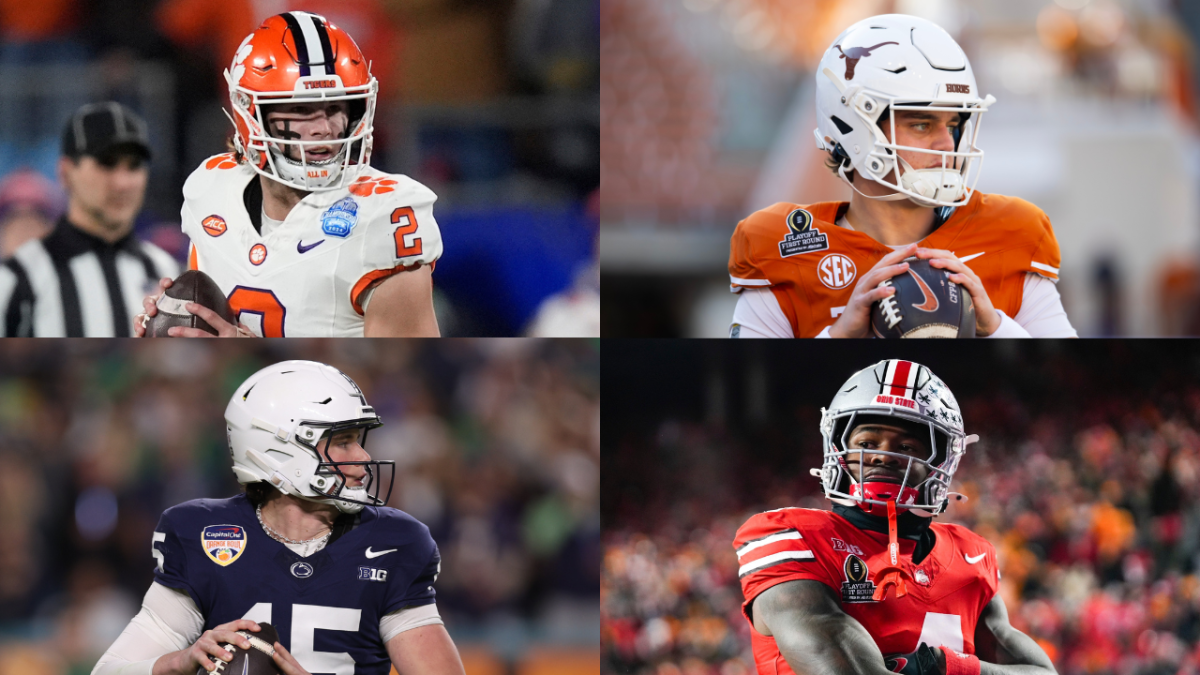

As the 2025–26 college football season nears, the Name, Image, and Likeness (NIL) era continues to reshape the landscape of college athletics. What once revolved solely around stats and trophies has evolved into a high-stakes marketing game, where branding, influence, and media presence are often just as valuable as on-field performance. Names like Shedeur Sanders, Bronny James, and Livvy Dunne have shown just how powerful a personal brand can be in today’s college sports ecosystem.
Now, with a new academic year on the horizon, a fresh wave of football stars is rising to the top of the NIL charts. From household names with massive social media followings to elite prospects poised for breakout seasons, these athletes are commanding serious value — both on and off the field. Here’s a look at the top 20 college football players with the highest NIL valuations entering the 2025–26 season.
- Texas QB Arch Manning ($6.8 million)
- Miami (Fla.) QB Carson Beck ($4.3 million)
- Ohio State WR Jeremiah Smith ($4.2 million)
- LSU QB Garrett Nussmeier ($3.7 million)
- South Carolina QB LaNorris Sellers ($3.7 million)
- Florida QB DJ Lagway ($3.7 million)
- Clemson QB Cade Klubnik ($3.4 million)
- Penn State QB Drew Allar ($3.1 million)
- Arizona State QB Sam Leavitt ($3.1 million)
- Michigan QB Bryce Underwood ($3 million)
- Duke QB Darian Mensah ($2.8 million)
- Oklahoma QB John Mateer ($2.7 million)
- Alabama WR Ryan Williams ($2.7 million)
- TCU QB Josh Hoover ($2.4 million)
- Ohio State S Caleb Downs ($2.4 million)
- North Carolina State QB CJ Bailey ($2.3 million)
- Nebraska QB Dylan Raiola ($2.3 million)
- Arkansas QB Taylen Green ($2.1 million)
- UCLA QB Nico Iamaleava ($2 million)
- Auburn QB Jackson Arnold ($2 million)
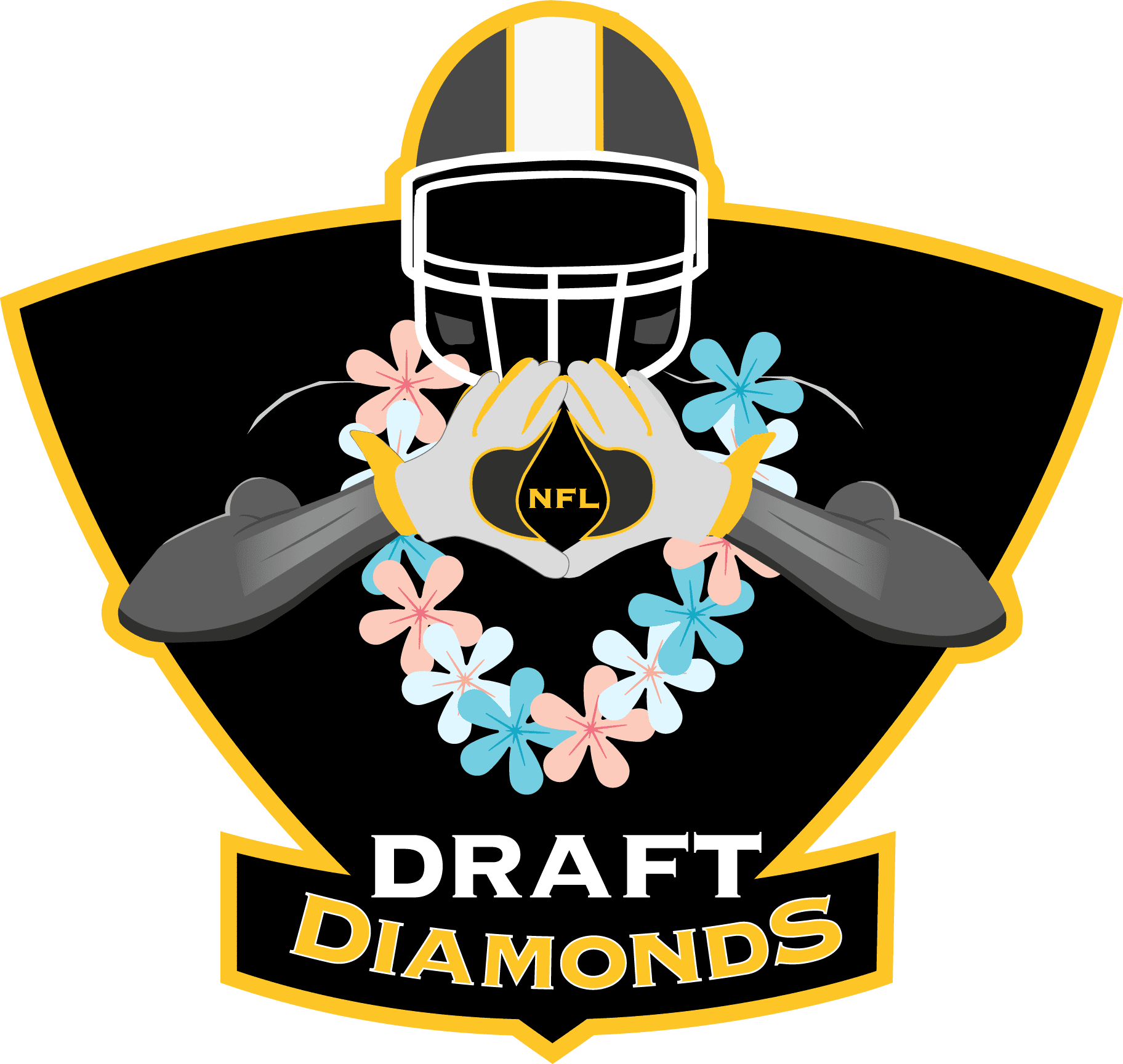

NFL Draft Diamonds was created to assist the underdogs playing the sport. We call them diamonds in the rough. My name is Damond Talbot, I have worked extremely hard to help hundreds of small school players over the past several years, and will continue my mission. We have several contributors on this site, and if they contribute their name and contact will be in the piece above. You can email me at nfldraftdiamonds@gmail.com
NIL
NCAA settlement throws a wrench in Miami Hurricanes’ NIL and recruiting machine
Under the current NIL-driven system, the Miami Hurricanes have done pretty well for themselves. Despite being in the ACC, the football program has remained reasonably competitive at least when they actually play defense and Miami basketball has a pair of deep runs in the NCAA tournament in recent years. Now, the recent NCAA compensation settlement […]

Under the current NIL-driven system, the Miami Hurricanes have done pretty well for themselves. Despite being in the ACC, the football program has remained reasonably competitive at least when they actually play defense and Miami basketball has a pair of deep runs in the NCAA tournament in recent years. Now, the recent NCAA compensation settlement has fundamentally changed the college sports landscape forever (again).
The details and short-term impacts of the settlement already seem pretty well known. All NIL deals over $600 after July 1 are now subject to oversight to ensure that they are for a “valid business purpose” and not just pay-to-play and each school can distribute up to $20.5 million to student-athletes as compensation.
However, what has yet to be understood is how this new system will really impact existing NIL deals and if the new oversight will actually limit spending from alumni/boosters the way everyone seems to want.
Hurricanes’ strategy of targeting top recruits with big dollars hangs in the balance after NCAA settlement
Under the terms of the settlement, any NIL deals paid out after July 1, 2025 will be subject to oversight to determine if they are legitimate payments or not. That seems fairly simple, but the impact on existing, but yet-to-be-paid deals for guys like top Canes recruit Jackson Cantwell who command large NIL paydays under the current system is trickier. The payments to Cantwell will obviously be regulated as he is a 2026 recruit, but does the $20.5 million cap on payments from the school change the calculus on Miami’s end and threaten to get Cantwell’s NIL deal voided because it isn’t “legitimate” depending on where the money is coming from?
This raises another fundamental issue for Miami and schools like them: the NIL oversight provisions themselves. Who exactly is going to be determining whether a deal is legitimate and will those judges change from case to case? Are power conferences going to get preferential treatment because their brands are already bigger and therefore more “legitimately valuable” when it comes to assessing marketing deals? How strict are these NIL overlords actually going to be?
We don’t have the answers to many of these questions yet and it could be a while before we do. The transfer portal is the Wild West right now as guys try to move around and get deals paid before the July 1 deadline. Once the dust settles and we start to see how this system actually operates, the Hurricanes may find that this “creating a level playing field” could end up costing them overall.
More Hurricanes News from Canes Warning
NIL
Super Regionals Upsets, Surprises & Stars: Day One Reactions
Image credit: (Photo by Zac BonDurant/Getty Images) Day One of Super Regionals is in the books and Friday reminded us of what makes June so captivating. Some national seeds flexed. A mid-majors proved, again, that it belong on this stage. A heavyweight showdown in Corvallis gave us a wild comeback and one of the postseason’s […]

Image credit:
(Photo by Zac BonDurant/Getty Images)
Day One of Super Regionals is in the books and Friday reminded us of what makes June so captivating.
Some national seeds flexed. A mid-majors proved, again, that it belong on this stage. A heavyweight showdown in Corvallis gave us a wild comeback and one of the postseason’s best moments so far. And while the baseball world buzzed, the entire landscape of college athletics shifted in a way that’s going to impact the sport for years to come.
We’ll dive into all of it here—the upsets, statement wins, stars of the day and what Friday’s off-the-field news means for the future of college baseball.
North Carolina Opens with Statement Win
Every postseason bracket delivers a dose of cruelty—whether through brutal travel, unfavorable matchups or bad timing against a red-hot opponent. Few teams drew a tougher hand this year than Arizona, which opened super regionals thousands of miles from home in front of a frenzied North Carolina crowd and against a Tar Heel team that could go all the way.
The matchup looked daunting on paper and proved even more so on the field.
The Tar Heels unloaded on the Wildcats for an emphatic 18-2 win in Friday’s opener, making clear they have no intention of missing their shot at Omaha.
This is as complete a team as remains in the field. Every North Carolina starter reached base in the rout, with eight collecting hits and four launching home runs. On the mound, righthander Jake Knapp continued his dominant postseason run, matching a school record with his 14th win, a mark that had stood since 1978.
With a rested and effective bullpen and an offense now fully firing after entering the tournament with some lingering questions, North Carolina suddenly looks like a national title threat.
With two chances to close the series, the Tar Heels will aim for an encore on Saturday and a return trip to college baseball’s biggest stage.
Coastal Continues Winning Streak to Open Supers
Friday’s opening slate didn’t deliver much in the way of true upsets. North Carolina’s blowout win went to script, and while Florida State fell to a talented Oregon State club, that result was well within expectation. If any outcome bordered on surprise, it was Coastal Carolina knocking off Auburn—though in truth, this was no upset at all.
In Baseball America’s view, the Chanticleers are simply performing to their standard.
Coastal has looked like an Omaha-caliber team for weeks, and Friday’s 7-6, extra-innings victory only underscored that. Coastal jumped out to an early lead but had to weather Auburn’s surge, as the Tigers erased a five-run deficit to force extras. There, Blake Barthol’s pair of spectacular defensive plays at second base and a catcher Caleb Bodine’s second solo home run of the game sealed it.
The Chants entered the postseason with the nation’s premier pitching staff, a unit capable of shutting down any lineup in the country. What was less certain was whether their offense would consistently match that level and that question looks answered now.
As we noted back in April, if Coastal could pair its elite arms with steady run production, it had the ingredients to contend for a title. One win from Omaha, it’s all coming together.
Don’t Doubt the Beavers
Oregon State hasn’t clinched a College World Series berth just yet—two losses in the next two days would still end its run—but after Friday night’s comeback, I’m ready to eat some crow.
Before the postseason, I questioned whether Oregon State had the résumé to warrant a top-eight national seed. I had Coastal Carolina pegged for that No. 8 spot and picked the Beavers comfortably as a host, but not much more. Then they powered through their regional, and despite that, I still picked Florida State to win the Corvallis Super.
Clearly, doubting this Oregon State team is a mistake.
For most of Game 1, it looked like Florida State would prove me right.
Joey Volini spun 6.2 strong innings, allowing one run with eight strikeouts, and Joe Charles dominated in relief—until he didn’t. Needing one final out in the ninth, Charles gave up three runs, capped by a clutch, two-strike, two-out game-tying single from Jacob Krieg. Oregon State walked it off in the 10th.
There’s no other way to say it: this Beavers team is gritty, talented and hard to kill. Friday night proved as much. They’ve earned full respect—and could be Omaha-bound very soon.
Louisville Secures Pivotal Game 1 Win, Miami Saves Ace
Louisville left little doubt in Friday’s Super Regional opener, dispatching Miami 8-1 in a game that turned lopsided after a brief early battle. The Hurricanes trimmed the lead to 2-1 in the top of the third, but from there, the Cardinals took full control, clicking in all phases and never letting up.
Jake Munroe was the offensive star, launching two home runs and driving in five runs to pace the lineup. On the mound, Patrick Forbes was reasonably sharp, striking out nine over 5.2 innings to set the tone.
It was as balanced and businesslike a performance as Louisville could have asked for, putting it one win from Omaha.
Now, all eyes turn to how Miami responds. Despite the lopsided result, this isn’t a mismatch on paper and the Hurricanes made a strategic choice that could loom large. By holding ace Griffin Hugus for Saturday’s elimination game, Miami preserved its best arm for when it matters most. The gamble didn’t flip Game 1, but it gives the Hurricanes a fighting chance to extend the series.
It’s also a fascinating case study in modern postseason pitching strategy, which we explored in more depth here.
Player of the Day
There were several worthy candidates for Friday’s top individual honor. Blake Barthol nearly earned it after a pair of jaw-dropping defensive plays, including a game-ending double play that sealed Coastal Carolina’s extra-innings win. Jake Knapp was in the conversation too—his ability to pitch deep into games is gold this late in the postseason, and he delivered again in North Carolina’s blowout victory.
But in the end, Jacob Krieg takes the crown. No player provided a bigger, more dramatic moment than the one Krieg produced in Corvallis.
Here’s the scene: Oregon State trailed Florida State 4-1 entering the bottom of the ninth. A bases-loaded wild pitch trimmed the gap to two. Then, with runners on second and third and two outs, Krieg—the Beavers’ nine-hole hitter—worked the count to 2-2 then lined the ball to left, driving in both runs to tie the game and ignite the home crowd. The Beavers would walk it off an inning later.
Krieg finished 2-for-4 with a double and two RBI, but it’s that ninth-inning swing that earns him this honor. On a night with limited drama, no moment loomed larger.
Big News For College Sports
Let’s zoom out for a minute to close, because the scope of this last topic is massive: college athletics changed forever last night.
While we were all locked into baseball, Judge Claudia Wilken of the United States District Court for the Northern District of California officially approved the landmark $2.8 billion House vs. NCAA settlement.
So what does that actually mean?
In short, schools can now start paying athletes directly through a new revenue-sharing model. Most power-conference schools will divide up about $20.8 million a year, with the majority earmarked for football. But how that money gets allocated is up to each school.
On top of that, NIL deals are still allowed—and likely still necessary for schools that want to go above and beyond. But there’s a new wrinkle: any NIL deal worth more than $600 now has to be reviewed and approved by the new College Sports Commission, led by former MLB exec Bryan Seeley. And here’s a key date—any new NIL deals signed after midnight on June 7 will fall under that review process, which is rumored to be more unkind to booster-driven contracts compared to sponsorship-type deals with companies.
For baseball specifically, the impact is huge.
The sport’s outdated 11.7 scholarship limit will phase out, with teams soon able to fund up to 34 full scholarships. Most power programs are expected to start in the 22-plus range and build from there.
It’ll take time for all of this to fully kick in. But make no mistake—college sports will never be the same.
NIL
All-American pitcher Sydney Berzon transfers to Oklahoma
All-American pitcher Sydney Berzon is staying in the SEC for her final season. The former LSU righty announced her commitment to Oklahoma. Berzon was a back-to-back NFCA All-American her first two seasons in Baton Rouge, but was one of the best in 2024. She had a 20-9 record and four saves along with a 1.78 […]
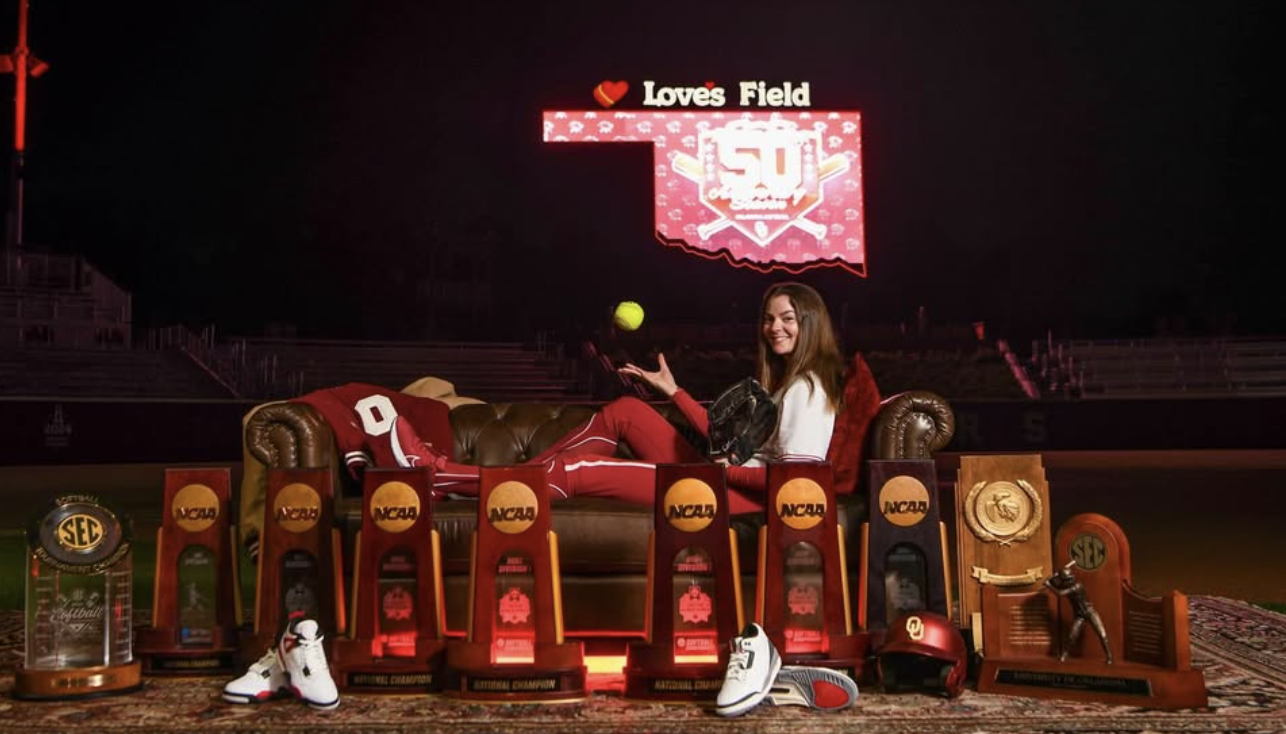
All-American pitcher Sydney Berzon is staying in the SEC for her final season. The former LSU righty announced her commitment to Oklahoma.
Berzon was a back-to-back NFCA All-American her first two seasons in Baton Rouge, but was one of the best in 2024. She had a 20-9 record and four saves along with a 1.78 ERA over 204 innings. Berzon threw a career-low 139.1 innings and 2.46 ERA has she battled through injuries. The rising senior relies on a heavy dropball.
For more transfer portal news, stay up to date with the Softball America transfer wire and the Dugout, our discussion board for members.
More from Softball America:
2027 Pitcher Recruiting Rankings
2027 Catcher Recruiting Rankings
2027 Middle Infield Rankings












